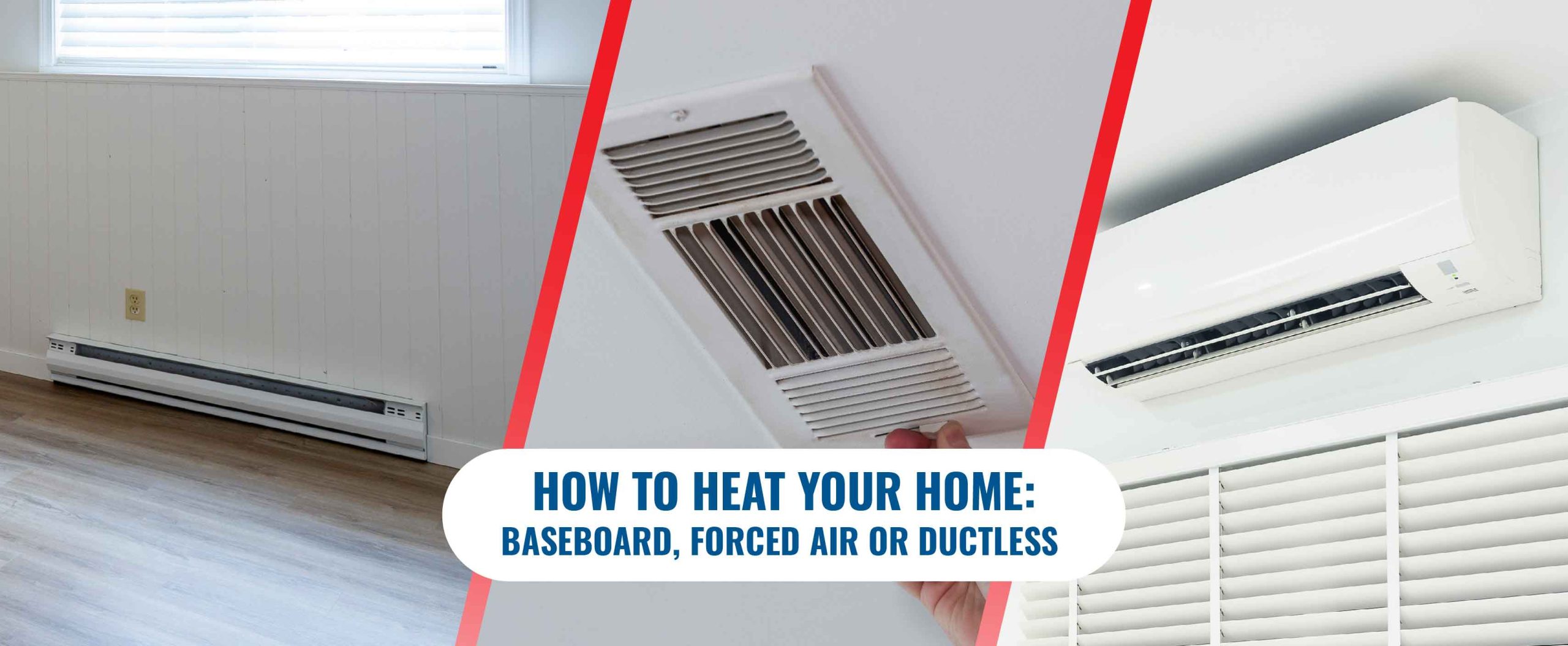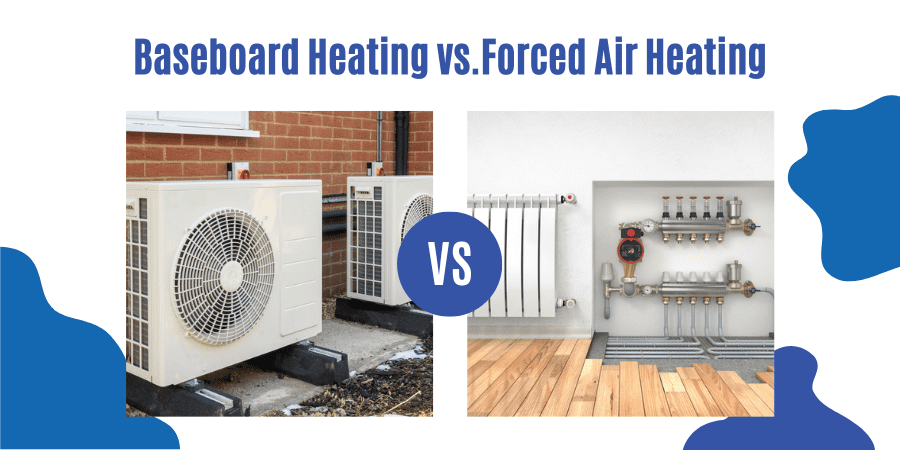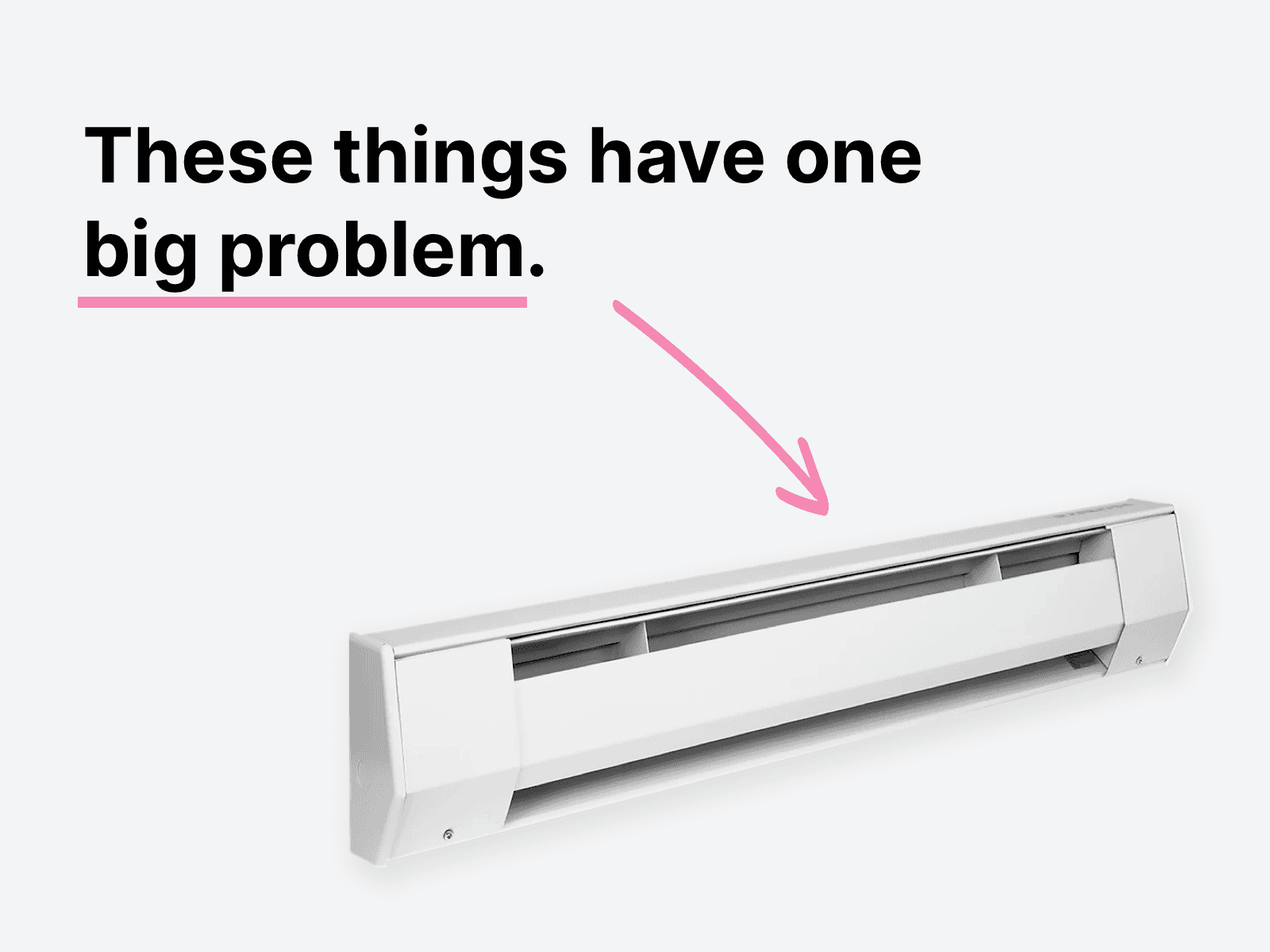To convert baseboard heat to forced air, consider replacing baseboard heaters with a forced air system for improved efficiency and cost savings. This conversion involves preparing your home for the installation of ductwork and a new heating system.
Switching from baseboard heating to forced air can be a worthwhile upgrade for homeowners looking to enhance heating effectiveness and modernize their HVAC system. By making this change, you can enjoy the benefits of improved heating distribution and potentially lower energy bills in the long run.
Be sure to consult with HVAC professionals to determine the feasibility and cost of converting to forced air heating in your home.


Credit: iwae.com
Exploring The Benefits Of Forced Air Heating
Understanding The Efficiency Of Forced Air Systems
Forced air systems excel in energy efficiency, distributing heat evenly throughout a space.
Comparing Forced Air To Baseboard Heating
When comparing, forced air heating systems offer quicker heating response times compared to baseboard heat.
Forced air systems are also known for their ability to filter and clean the air as it circulates, enhancing indoor air quality.
Considerations Before Converting
Transitioning from baseboard heat to forced air involves several key considerations. Evaluating the cost of conversion and assessing practicality are vital steps before making the switch.
Evaluating The Cost Of Conversion
1. Budget
Factor in installation costs for ductwork, new heating units, and potential modifications to your existing HVAC system.
2. Energy Efficiency
Evaluate long-term savings on energy bills with forced air compared to baseboard heat.
Assessing The Practicality Of The Conversion
1. Existing Infrastructure
Consider the feasibility of installing ductwork without significant alterations to your home’s structure.
2. Heating Needs
Assess if forced air heating aligns with your heating requirements and comfort preferences.
The Conversion Process
Convert your baseboard heat to forced air for more efficient heating in your home. Switching to a forced air system can save you money in the long run. Make the conversion from baseboard heating to forced air to benefit from improved energy efficiency and cost savings.
Preparing The Home For Forced Air Installation
Converting baseboard heat to forced air involves several essential steps to ensure a successful transition. Before beginning the installation process, it is crucial to prepare the home for the new HVAC system.
- Clearing out space: The first step in preparing for forced air installation is to clear out any obstructions around the area where the vents and ductwork will be installed.
- Assessing insulation: Proper insulation is vital for optimizing the efficiency of a forced air system. Therefore, it’s essential to evaluate the current insulation in the home and make necessary upgrades if required.
- Electrical and structural considerations: Assess the existing electrical system to ensure it can support the new forced air HVAC system. Additionally, check the structural integrity of the home to accommodate any additional ductwork.
- Consultation with professionals: Seeking guidance from HVAC professionals can offer valuable insights into the specific preparation requirements based on the home’s layout and existing infrastructure.
Selecting The Right Hvac System
Choosing the appropriate HVAC system is a critical aspect of converting baseboard heat to forced air. Selecting the right system will ensure optimal performance and energy efficiency.
- Ductwork design: Assess the layout of the home to determine the ideal ductwork design that will efficiently distribute air throughout the living spaces.
- Energy efficiency considerations: Look for HVAC systems with high energy efficiency ratings to minimize operational costs and reduce environmental impact.
- Heating and cooling capacity: Evaluate the heating and cooling capacity of the HVAC system to ensure it can adequately meet the home’s thermal comfort needs throughout the year.
- Professional recommendations: Seek guidance from HVAC professionals to identify the most suitable system based on the specific requirements of the home.

Credit: www.hurleyanddavid.com
Professional Insights And Recommendations
Experience the efficiency and savings of converting baseboard heat to forced air. Say goodbye to costly energy bills with a seamless transition. Gain professional insights and recommendations for a comfortable home upgrade today.
Experts’ Advice On Baseboard To Forced Air Conversion
Replacing baseboard heating with forced air systems is a common choice for homeowners seeking improved efficiency and long-term cost savings. The process of converting from baseboard heating to forced air may seem daunting initially, but with the right guidance and professional insights, it can be a straightforward and rewarding project. To help you navigate this transition, HVAC experts offer valuable advice:
- Seek consultation from licensed HVAC professionals to evaluate your current heating system and determine the feasibility and suitability of a baseboard to forced air conversion.
- Consider the overall heating needs and size of your home to ensure the forced air system is appropriately sized for optimal performance and efficiency.
- Review the local building codes and regulations to ensure compliance with any necessary permits and installation requirements.
- Budget for the conversion costs, which may include equipment purchase, installation, ductwork modifications, and electrical upgrades.
- Research and compare different forced air systems, such as heat pumps or furnaces, to determine the best option for your specific requirements and preferences.
- Discuss energy-efficient features and technologies with your HVAC professional, such as variable-speed blowers or programmable thermostats, to further enhance the energy efficiency of your new forced air system.
Common Challenges And Solutions
Converting from baseboard heating to forced air systems may involve a few challenges along the way. However, with careful planning and the right solutions, these challenges can be effectively addressed:
- Removing baseboard heaters and making necessary repairs to existing walls or floors is a common challenge. Ensure to hire skilled contractors for a professional and seamless transition.
- Installing new ductwork can be time-consuming and disruptive. Work closely with your HVAC contractor to develop a comprehensive plan that minimizes disruptions and maximizes efficiency.
- Upgrading electrical systems to accommodate the additional power requirements of a forced air system may be necessary. Consult with licensed electricians to ensure a safe and reliable electrical setup.
- Ensuring adequate airflow distribution throughout all rooms of the house can be a challenge. Work with your HVAC professional to design a well-balanced ductwork system and consider zoning options to optimize comfort and energy savings.
- Managing the overall cost of the conversion is a common concern. Obtain multiple quotes from reputable HVAC companies and consider long-term energy savings when evaluating the return on investment.
Real Experiences And Testimonials
Thinking of converting baseboard heat to forced air? Read real experiences and testimonials from homeowners who made the switch. Discover cost-effective solutions and tips for a successful transition.
arrived in Austin, Texas, I never really considered converting my baseboard heat to forced air. However, after hearing about the incredible comfort and energy savings that others have experienced, I decided to explore this option further. ## Homeowners’ Stories of Converting to Forced Air (H3) I reached out to several homeowners who have made the switch from baseboard heat to forced air, and their testimonials were eye-opening. Here are a few of their stories: 1. ### Mary’s Cozy Home (H3) Mary, a homeowner in Austin, Texas, shared her experience of converting to forced air. She mentioned how her home’s temperature is now evenly distributed throughout, eliminating those chilly spots that were common with baseboard heating. With forced air, Mary can enjoy consistent and comfortable temperatures in every room of her house. 2. ### Steve’s Energy Savings (H3) Steve, another homeowner in Austin, experienced significant energy savings after converting to forced air. He noticed a decrease in his monthly utility bills, thanks to the improved efficiency of forced air systems. Steve emphasized how this decision not only made his home more comfortable but also saved him money in the long run. 3. ### Sarah’s Improved Air Quality (H3) Sarah, a homeowner in Austin, was impressed by the improved air quality she experienced after converting to forced air. With baseboard heating, dust and allergens would sometimes accumulate, causing discomfort and respiratory issues. However, since making the switch, Sarah noticed cleaner and fresher air throughout her home. ## Impact on Comfort and Energy Savings (H3) The impact of converting from baseboard heat to forced air goes beyond just comfort—it also leads to remarkable energy savings. Here are a few essential points to consider: – Proper distribution: Forced air systems ensure that warm air is distributed evenly throughout every room, eliminating any temperature inconsistencies common with baseboard heating. – Efficient heating: Unlike baseboard heat, forced air systems can reach the desired temperature quickly. This means less waiting and more comfort for homeowners. – Energy savings: Forced air systems are known for their energy efficiency. With better insulation and the ability to control temperature zones, homeowners can save a significant amount on their monthly utility bills. – Improved air quality: Forced air systems often come with built-in air purifiers and filters, helping to eliminate dust, allergens, and other contaminants. This results in cleaner and healthier air for you and your family. Converting from baseboard heat to forced air not only enhances comfort but also helps homeowners save money and improve indoor air quality. The real experiences and testimonials from homeowners who have made this switch speak volumes. If you’re considering converting to forced air, these stories serve as a testament to the remarkable benefits you can expect to enjoy.
Credit: carbonswitch.com
Frequently Asked Questions For Convert Baseboard Heat To Forced Air
How Much Does It Cost To Switch From Baseboard Heat To Forced Air?
Converting from baseboard heat to forced air typically costs a few thousand dollars. The exact cost varies depending on service providers. Forced air systems are more efficient and can lead to long-term savings, making the switch a common choice for many homeowners.
Can You Change A House From Baseboard Heating To Forced Air?
Yes, it is possible to change a house from baseboard heating to forced air. Many homeowners choose to make this switch because forced air systems are more efficient and can save money over time. However, you should be prepared for the cost and necessary preparations before making the switch.
Can Baseboard Heat Be Forced Air?
Yes, baseboard heat can be forced air. Some electrical units use a centrifugal fan to blow air out, converting it into a forced air baseboard heater. Hydronic baseboard heaters use electricity to heat water or oil, which then radiates into the room.
Is It Expensive To Get Rid Of Baseboard Heating?
Converting baseboard heating to forced air may cost a couple of thousand dollars. Forced air systems are more efficient and cost-effective in the long run.
Can Baseboard Heating Be Converted To Forced Air?
Yes, baseboard heating can be converted to forced air by replacing the baseboard heaters with a forced air system.
Conclusion
Converting from baseboard heat to forced air can greatly enhance the comfort and efficiency of your home. With forced air systems being more energy-efficient, the investment ensures long-term savings. Additionally, this conversion offers more consistent heating and a wider reach throughout your home.
Consult with professionals to fully understand the benefits and costs involved.
